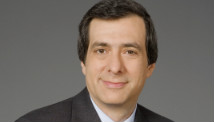TOKYO (Reuters) - Asian shares rose on Wednesday as investors resumed buying after taking profits from a sharp rally at the start of the year while warily bracing for corporate earnings season to kick off in full force.
European shares were seen following Asia's lead with a modest rise, with financial spreadbetters predicting London's FTSE 100 <.ftse>, Paris's CAC-40 <.fchi> and Frankfurt's DAX <.gdaxi> would open as much as 0.3 percent higher. U.S. stock futures suggested a firmer Wall Street start with a 0.1 percent gain. <.l><.eu><.n/>
The yen's rebound as part of broader market position adjustments was also short-lived, with the dollar erasing earlier losses to rise 0.5 percent to 87.48 yen on sustained expectations of further monetary easing in Japan.
MSCI's broadest index of Asia-Pacific shares outside Japan <.miapj0000pus> rose 0.4 percent. Hong Kong shares <.hsi> were among the top gainers with a 0.5 percent climb, bouncing from their lowest in a week as Chinese banks were supported by a brokerage upgrade. Shanghai shares <.ssec> rose 0.3 percent.
"We are running into chart resistance now, so investors are looking to rotate into laggards. There is no need to be too bearish right now, at least in the first quarter," said Hong Hao, Bank of Communication International Securities' chief strategist.
Australian shares <.axjo> ended up 0.4 percent to break a three-day losing streak.
Alcoa Inc , the largest aluminum producer in the U.S., with customers in a wide range of industries, launched the U.S. earnings season on Tuesday. It reported a fourth-quarter profit of $242 million, in line with Wall Street expectations.
U.S. corporate profits are expected to be higher than the third quarter's lackluster results, but analysts' estimates are down sharply from where they were in October.
Credit Suisse said in a research note that Asian equity market price indices may start to catch up with earnings estimates which had been outperforming market prices, suggesting further upside scope for Asian share prices.
The consensus earnings forecast so far is flat in January, following virtually flat revisions in December, it said.
"It was the persistent EPS downgrades that led to the gap between equity market price indices and EPS. These flat revisions could act as a catalyst for equity market price indices to converge with EPS," Credit Suisse said.
Data flows were light with Australian retail sales surprisingly fell 0.1 percent in November from October, against forecasts for a 0.3 percent rise on the month, sending the Australian dollar down to session lows of $1.0486 from $1.0517 before the data was released.
China will release its December trade data on Thursday, which includes initial estimates for metals imports and exports.
U.S. crude and Brent both eased 0.1 percent to $93.03 a barrel and $111.86 respectively.
"What we're seeing in the oil markets is the cautious sentiment playing up ahead of some key economic events this week," said Ker Chung Yang, senior investment analyst at Phillips Futures Pte in Singapore.
Australian retail sales: http://link.reuters.com/zew92t
China exports graphic: http://link.reuters.com/kun94t
Euro zone retail sales: http://link.reuters.com/tyb25s
^^^^^^^^^^^^^^^^^^^^^^^^^^^^^^^^^^^^^^^^^^^^^^^^^^^^^^^^^^^>
YEN STAYS WEAK
Japan's benchmark Nikkei stock average <.n225> erased earlier losses to end 0.7 percent higher, bolstered by the yen's resumed weakness. The dollar had risen about 12 percent over the past two months against the yen, contributing to the Nikkei's 22 percent jump in the same period. <.t/>
Expectations of much bolder monetary easing from the Bank of Japan to help Tokyo beat deflation under new Japanese Prime Minister Shinzo Abe have encouraged investors to sell the yen.
But as trading resumed from year-end holidays, analysts and traders said markets were ripe for position adjustments.
"After a good run in risk assets since December, we entered in a phase of consolidation which is moving from Japanese equities to short JPY positions," said Sebastien Galy, FX strategist at Societe Generale in New York, in a note, adding that the dollar could consolidate to 85 yen but must first take out the first Fibonacci retracement at 85.75 yen.
Yen crosses which had been bought the most, including the yen/Korean won, are the most exposed to the correction.
"Such a washout in JPY crosses is the opportunity many long-term investors will be waiting for to continue their switch into strategic short yen positions," he said.
The dollar earlier on Wednesday fell as low as 86.825 yen, having scaled its highest since July 2010 at 88.48 on Friday. The euro also added 0.2 percent to 114.475 yen, off the day lows of 113.55. The euro last week hit 115.995 yen, its highest since July 2011.
The Bank of Japan will consider easing monetary policy again at its January 21-22 meeting, by likely boosting buying of government bonds and treasury discount bills, while considering a doubling of its inflation target to 2 percent.
The euro held steady against the dollar at $1.3086, ahead of Thursday's European Central Bank policy meeting and Spanish and Italian bond auctions toward the end of the week.
Sentiment turned cautious in Asian credit markets, with the spread on the iTraxx Asia ex-Japan investment-grade index widening slightly by 1 basis point.
(Additional reporting by Clement Tan in Hong Kong and Ramya Venugopal in Singapore; Editing by Eric Meijer)


